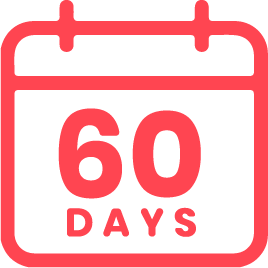why shop manta sleep
6 Simple Ways to Beat the Afternoon Slump
Picture this:
You’ve just had your lunch. You’re settling back into your office chair to tackle the rest of your to-do list.
Still feeling the momentum of your super-productive morning, you confidently dive into the next task on your list.
But about 30 seconds in, you hit a wall. Your eyes are heavy. Your head feels groggy. And you feel like you’re working (and thinking) in slow motion.
You’ve hit your afternoon slump.
If you’re like most people, your next step is heading to the coffee machine for a cup (or 3) of instant energy.
But more often than not, your coffee break leaves you feeling wired instead of focused, and your energy boost fades before you’ve had a chance to use it.
That’s why we’ve compiled 6 simple, coffee-free fixes for your afternoon slumps — so you can say “hello” to productive afternoons, minus the coffee guzzling.
First, let’s explore why afternoon slumps happen in the first place.
What Causes Afternoon Slumps?
You almost always start your day off on your A game.
Most days, you cross your most important task off your list faster than expected, tackle a few of the important-but-not-urgent emails you’ve been putting off and even squeeze in a phone call or two. All before lunch.
You love feeling productive, and you’re clearly capable of getting stuff done.
So why does your productivity consistently drop off in the afternoon?
You owe your afternoon slumps to two things: your body’s natural cycles and your daily routines (your eating habits, primarily).
Your Body’s Natural Cycles
Your body naturally feels the urge to sleep (1) between the hours of 2 to 4 a.m. and 1 to 3 p.m. While 2 to 4 a.m. is ideal for most people, 1 to 3 p.m. is not the prime time for sleep.
Also, you start to feel less energized about seven hours after waking up. So, if you wake up at 6 a.m., you will begin to feel tired around 1 p.m.
Your Daily Routines
You might also be feeling sleepy because of your food choices and lifestyle habits.
A carb-heavy lunch (2) will make you feel sluggish and tired in the afternoon. And when your morning caffeine wears off, your brain naturally feels cloudy and unfocused.
In addition, sitting all day will make you feel groggy by the afternoon, no matter what you eat.
Though afternoon slumps are natural and often feel inevitable, there are ways to lessen their impact on your productivity.
How to Beat the Afternoon Slump
If you’re ready to take back your afternoons, read on.
We’ve compiled the internet’s most effective tips for fighting afternoon sleepiness and boosting your post-lunch productivity levels.
Tip 1: Work with Your Natural Rhythms
Your body follows a natural sleep-wake cycle — so you will inevitably feel energized and sleepy at different points during the day.
Our advice? Instead of fighting this cycle (by drinking coffee, for instance), work with it.
If you know you’re more productive in the morning, schedule important tasks for that time — and save smaller, less-important tasks for the times you know you’ll be feeling groggy.
Tip 2: Save Your Mindless Tasks
Building on the first tip, make sure to save your mindless tasks for the afternoon.
Instead of organizing your desk, emptying your inbox or doing admin first thing in the morning, add those to-dos to a “mindless tasks” list and save them for later.
Then, when you start to feel tired, step away from mentally-challenging tasks, take a look at your “mindless tasks” list and work your way through it.
By completing these mindless tasks, you’ll start to feel more productive, instead of feeling guilty that you’re tired.
This burst of productivity will help get you through your slump and fuel you through the rest of your afternoon.
Tip 3: Smell Peppermint
This is a simple fix that can boost your productivity instantly.
Keep some peppermint oil (3), rosemary, eucalyptus leaves or even a piece of citrus fruit in your desk.
When you start to feel groggy, smell one of them for a quick, refreshing burst of energy.
Tip 4: Take a Dance Break
When you start to feel sluggish, blast some of your favorite dance music, get up and shake it out.
After a short dance break, you’ll start to feel revitalized.
When you return to your desk, you may feel a little silly — but you’ll also feel a lot more productive.
Tip 5: Schedule Afternoon Group Meetings
It’s easy to give in to your tiredness when you’re working alone because there’s no one counting on you. But when you’re working in a group, other people need your input — so you need to be alert and contribute to the conversation.
That’s why, if you work with a group, it’s best to schedule your brainstorming sessions for your prime afternoon-slump hours.
That way, you have something to keep you going through what might have otherwise been an unproductive afternoon.
Tip 6: Call a Friend
If you feel yourself slipping into sleepiness, pick up the phone and call a friend.
(Or your mom, brother, sister, dad, cousin, grandma — doesn’t matter, as long as it’s someone you want to talk to.)
A quick five-minute conversation can help boost your energy by giving your brain a relaxing, yet stimulating, break.
Afterward, you’ll likely find it much easier to refocus on your afternoon tasks.
Prepare for Productive Afternoons
It’s natural to feel tired in the afternoon. Your natural rhythms, food choices and sitting habits can all cause grogginess.
But now that you know how to deal with post-lunch sleepiness in ways that work way better than coffee…
…your afternoons are about to get way more productive.
The only question is this: what are you going to do with your newfound efficiency?
Sources:
(1) Andrews, Linda W. “5 Simple Fixes for an Afternoon Slump at Work." Psychology Today, 22 Feb. 2018, www.psychologytoday.com/us/blog/minding-the-body/201802/5-simple-fixes-afternoon-slump-work
(2) “5 Fast Ways to Overcome an Afternoon Slump." Sleep.org, www.sleep.org/articles/5-ways-overcome-afternoon-slump/. Accessed 7 May 2019.
(3) Reader's Digest Editors. “18 Tricks to Beat the Afternoon Slump at Work.” Reader's Digest, www.rd.com/health/wellness/13-ways-to-beat-the-afternoon-slump-at-work/. Accessed 7 May 2019.










![Manta Sleep Earplugs [10 Pairs]](https://cdn05.zipify.com/sQQA6xKYQn2FecyvgbWD1D8WnoA=/fit-in/1030x0/d40324cb6efd43759b43e4dbb4c2c84f/earplugs.jpg)

